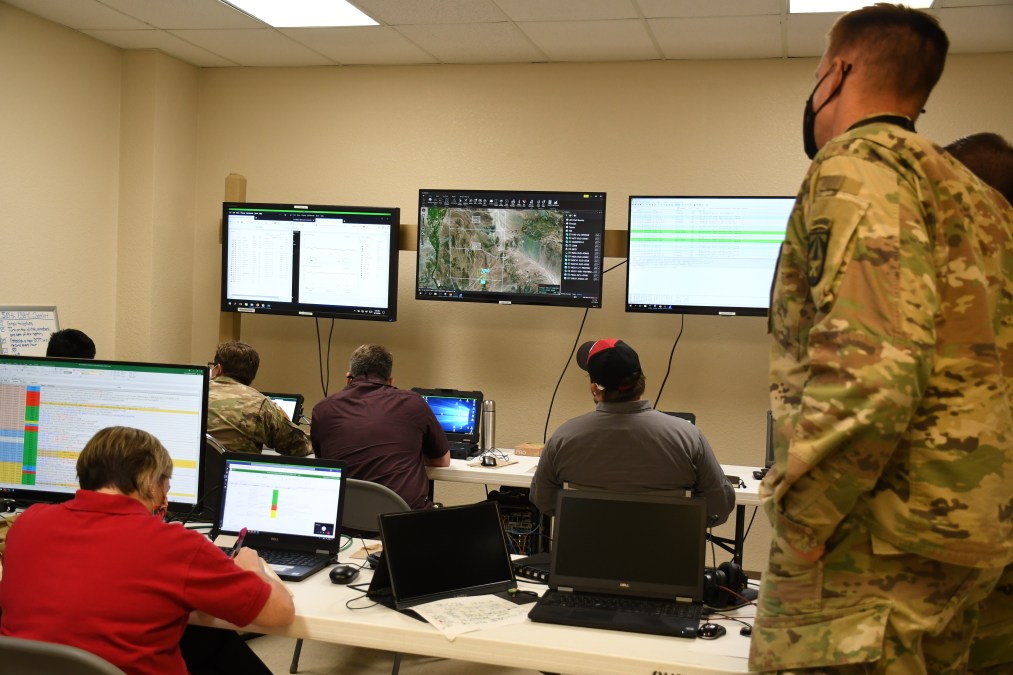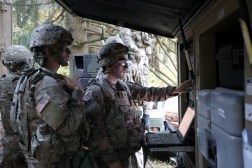Army focuses on tactical networks in 2021 tests of Project Convergence

The Army is focused in 2021 on testing new tactical networks to send more data to artificial intelligence-enabled systems — a critical part of its Project Convergence.
The tests began earlier this year and will continue in both a lab-based virtual environment and later through live demonstrations in the field, combining new software, weapons and tactical networks.
Project Convergence is the Army’s contribution to the military-wide Joint All Domain Command and Control (JADC2) concept where data is fused across the land, air, sea, cyber and space domains. To achieve that, the Army is now turning its attention to beefing up its tactical networks.
The Army’s first major stab at testing JADC2 and Project Convergence took place in September 2020 when it was able to target and shoot things faster with the assistance of software. Now in 2021, the Army is taking those lessons learned to new simulated environments at Aberdeen Proving Ground in Maryland to improve the networks the data runs across.
“One of the things we learned out of [Project Convergence tests in 2020] was that it’s critical to integrate early and often,” Col. Curtis Nowak, U.S. Army Joint Modernization Command’s JADC2 director, said in a release. “[Aberdeen Proving Ground] has unique lab facilities that allow us to do lab-based risk reduction on technologies we had in the desert without having to fight through challenges in the field.”
The virtual tests will take place in the Joint Systems Integration Lab (JSIL), which can simulate networks and the constraints they will operate in, according to a news release from the Army. One of the key challenges the Army is trying to overcome is how to transmit more data with less bandwidth. The Army anticipates future fights will take place in “constrained” environments, where cyberattacks, interference and lack of infrastructure could degrade or limit network capabilities.
One of the first workarounds tested in the lab is the use of commercial radios as a transport for data in targeting.
“The radios provided a mobile ad-hoc networking technology mesh network, which enabled information exchanges between sensors, decision-making agents and weapons platforms,” according to the release.
The new network arrangements and mobile networks will continue to be tested for their ability to transmit data and link into AI-enabled systems to comprehend that data. The Army says it will keep testing in virtual environments before moving to major field tests in the desert of Yuma, Ariz., later this year.
“We have been focused on readiness and the ability to ‘fight tonight,’ but Project Convergence is all about fighting tomorrow or the day after,” Nowak said.




